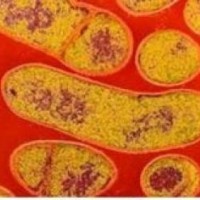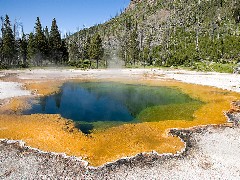After that, we finished our notes on what makes us sick, but because the pages were mixed up we sort of had to skip around. We did pages (not in the correct order by the way) 22, 24, 1st half of
 25 but other half was a review of T and B cells, 26, 27, 28, and 29. these pages were focused on the T and B cells, and how they worked. T cells have 3 types, cytotoxic (killer) T cells, helper T cells, and a third type (found in the study section on pages 49-55 which you should read) called Suppressor T cells. Helper T cells identify the foreign substance in the body, mark it to be destroyed, and stimulates the growth of cytotoxic T cells and B cells. Cytotoxic T cells kills infected body cells that are malfunctioning or are producing pathogens. Suppressor T cells slows activity of T and B cells after the infection is dealt with. B cells produce memory cells and plasma cells. Plasma cells create antibodies to combat the infection and memory cells keeps formula of cells that combat a certain infection or disease.
25 but other half was a review of T and B cells, 26, 27, 28, and 29. these pages were focused on the T and B cells, and how they worked. T cells have 3 types, cytotoxic (killer) T cells, helper T cells, and a third type (found in the study section on pages 49-55 which you should read) called Suppressor T cells. Helper T cells identify the foreign substance in the body, mark it to be destroyed, and stimulates the growth of cytotoxic T cells and B cells. Cytotoxic T cells kills infected body cells that are malfunctioning or are producing pathogens. Suppressor T cells slows activity of T and B cells after the infection is dealt with. B cells produce memory cells and plasma cells. Plasma cells create antibodies to combat the infection and memory cells keeps formula of cells that combat a certain infection or disease.W
 e also learned about primary and secondary immune responses. The primary immune response occurs when a new or mutated pathogen enters the body, and it takes a few days to produce antibodies, but the memory cells store formula to combat re-infection. Secondary immune response occurs with the pathogens 2nd infection, and it killed off much more rapidly because of the memory cells, and is often symptom free.
e also learned about primary and secondary immune responses. The primary immune response occurs when a new or mutated pathogen enters the body, and it takes a few days to produce antibodies, but the memory cells store formula to combat re-infection. Secondary immune response occurs with the pathogens 2nd infection, and it killed off much more rapidly because of the memory cells, and is often symptom free.Immune disorders were in our notes as well. they are the consequence of a malfunction of the immune system. They include allergies, autoimmune disorders - system turns against bodies own molecules, and immunodeficiency diseases - when body lacks one of more parts of the immune system. Some types of autoimmune diseases are rheumatoid arthritis, juvenile diabetes, multiple sclerosis, and lupus. Some immunodeficiency diseases are SCID (Severe Combined Immunodeficiency) which there is few T and B cells, Hodgkin disease, and AIDS/HIV, which attacks helper T cells.
After that we watched a few short movies on T and B cells/antibodies. Antibodies attach to pathogens, stopping them from infecting cells (neutralization), then preform agglutination, or clumping so a phagocyte can kill them in phagocytosis. B cells make humoral immunity, in which B cells send out antibodies, each which can only bind to one type of antigen and make memory cells and plasma cells. Helper T cells sends signals to stimulate growth of other T and B cells after marking infected cell.
HW: Spice lab, Read UP pages49-55, do UP pages 45-46






















